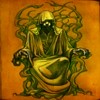About Cardolan
#1

Posted 05 July 2010 - 03:26 PM
#2

Posted 07 July 2010 - 10:37 AM
There is not much info on Cardolan as a separate kingdom, we even don't know the names of their rulers.
In [part of] the Second Age, much of what was later to be called Cardolan was an Elven Fief ruled by Celeborn.
Extract from the Thain's book:
In 861 T.A., Arnor was divided into three separate kingdoms: Arthedain, Cardolan, and Rhudaur.
A major source of contention among the three kingdoms was possession of the Weather Hills, which were located at the point where all three kingdoms met. There was a palantir in the Tower of Amon Sul on Weathertop, and both Cardolan and Rhudaur wanted to claim it, particularly since Arthedain already had the two other palantiri.
In 1409, the Witch-king of Angmar sent a great army to attack the Dunedain. [...] The prince of Cardolan was killed, and there was no one left in his line to succeed him. He was buried in the Barrow-downs. Some of the surviving Dunedain of Cardolan took refuge in the Barrow-downs and the Old Forest and held out against the enemy.
In 1636, the Great Plague came north ... many people in Cardolan died, and the Dunedain there were wiped out entirely. The tombs in the Barrow-downs in Cardolan were occupied by evil spirits called Barrow-wights from Angmar.
--------------------
You might be able to extract a little more from History of Middle-earth, Vol. XII, pp. 193-5, 208-10, 228 and 230.
... a star shines on the hour of our meeting ...



#3

Posted 07 July 2010 - 03:26 PM
What about the thought of a book by us? Since Rhudaur, Cardolan, and a few other places like the Harad and Rhun regions are soo vague (look at the maps, its practically empty with no sign of any city not even a star to signify a city is there) we could make a community book (unpublished ofcourse and free) for random references, just like Mollock. (again just an idea).
#4

Posted 07 July 2010 - 04:18 PM
... like which Mollock???... just like Mollock.
... a star shines on the hour of our meeting ...



#5

Posted 07 July 2010 - 04:26 PM
A post by a certain user who is quite knowledgable in these kind of things.
Edited by _Haldir_, 07 July 2010 - 04:28 PM.
#6

Posted 07 July 2010 - 04:36 PM
@Namo: Sad face, Namo!
#7

Posted 08 July 2010 - 11:20 AM
@Drogoth: I guess that post gave you a fair indication on my views concerning inventing lore, that has no basis in Tolkien's writings.
Some general background info on Arnor ... just an interim post with some interesting info for further discussion:
Source
In the Cataclysm of 3319 SA, all the indigenious peoples [of Eriador] must have suffered terrible losses when the coastlines were inundated and earthquakes and storms must have demanded their tolls. [...] Survivors were found only in and around the White and the Misty Mountains from where they slowly repopulated Enedwaith and Minhiriath, and in the interior of Eriador.
When the Elendili established the Realms in Exile, the situation stabilised and "many Men turned ... from evil and became subject to the heirs of Elendil." (RP) But with regard to past events, the pre-Númenóreans still saw few reason to love the Dúnedain, particularly as they certainly had stayed unaware of the inner disputes of Westernesse and never learned to distinguish between King's Men and Faithful (not that the distinction would have meant much to them, anyway). Thus "yet many more remembered Sauron in their hearts and hated the kingdoms of the West." (RP) And so, in the War of the Last Alliance, they will likely have served as auxiliaries to Mordor. Others feared the Dark Lord so much that they refused to fight on either side, such as the current King of the Mountains who first swore allegiance to Isildur "but when Sauron returned and grew in might again, Isildur summoned the Men of the Mountains to fulfill their oath, and they would not: for they had worshipped Sauron in the Dark Years. ... They fled before the wrath of Isildur, and did not dare to go forth to war on Sauron's part; and they hid themselves in secret places in the mountains and had no dealings with other men, but slowly dwindled in the barren hills." (RK) Eventually, they faded and became the Dead Men of Dunharrow, ghastly shadows haunting the dark vales of Ered Nimrais. This was the end of the pre-Númenóreans of Gondor.
The Third Age saw the further extinction of many of the surviving indigenious cultures and languages. After the foundation of the Realms in Exile, those peoples who in the later part of the Second Age "had passed into the empty lands" of Eriador were successfully "númenorised": they "had become subjects of the North Kingdom of Arnor and had taken up the Westron tongue." (LP) But the losses of the War of the Last Alliance provoked that the North Kingdom would never gain save ground. Though Isildur's son "Valandil took up his abode in Annúminas, ... his folk were diminished, and of the Númenóreans and of the Men of Eriador [i. e. the Middle Men] there remained now too few to people the land or to maintain all the places that Elendil had built; in Dagorlad, and in Mordor, and upon the Gladden Fields many had fallen." (RP)
This massive depopulation was held to be the main reason of Arnor's ultimate splintering "into petty realms and lordships" (RP) that were individually without chance to survive. In the early second millenium, the Hobbits entering Arnor still had the impression that "Men were still numerous there, both Númenóreans and other Men related to the Atani, beside remnants of Men of evil kinds, hostile to the Kings", (DM) but none ever recovered enough to conceal the dramatic underpopulation of the entire kingdom. The númenorisation of the indigenious peoples was the most effective in the Western parts of Arnor that later comprised Arthedain; but elsewhere, particularly in Rhúdaur were the Dúnedainic upper class had always been the thinnest, it utterly failed. By all likelihood, Isildur's curse against the Men of Dunharrow had left there a lasting impression of how the Kings used to deal with subjects who refused to follow them into disaster. And the quickly dealt out epithet "Men of evil kinds" did not ease the tension any more than Valandil's relocation closer to his people's problems did. So, when Angmar was founded by the Witch-king there "gathered many evil men" (KR), for it was by not a few considered a serious alternative to the Realm in Exile.
When Rhúdaur was turned into a sovereign kingdom it became immediately exposed to severe pressure by "Hillmen of the North", mysterious people who now for the first time entered the chronicles of the West. They were no doubt descending from the appointed "remnants of Men of evil kinds" who may have been descended from Bórrim or other Swarthy Men from Beleriand. But beyond that, little is known about them. Some sources state that from the 14th century on, they "build dark forts in the hills" (HE) and that they were "much given to sorcery" (YT). Slowly, they pushed back the Dúnedain of Rhúdaur until the throne was "seized by an evil lord of the Hillmen, who was in secret league with Angmar" (KR). By this time, there were still loyal minorities living beyond the Weather Hills; but after the fatal year of 1409 TA, all of Rhúdaur "was occupied by evil Men subject to Angmar, and the Dúnedain that remained there were slain or fled west." (KR. Probably at this time, Trolls appeared in eastern Rhúdaur, advancing into the regions which later were known as the Trollshaws.) But the Hillmen as well were ultimately doomed, for "all were destroyed in the war that brought the North Kingdom to its end." (FR)
This must have meant a tremendous ethnical cleansing on both sides, and Eriador fell in major parts into desolation from which it never recovered. Cardolan was deserted and withstood attempts to resettle it (HE). Rhúdaur was inhabited only by fell non-human creatures. An even further blow was the Great Plague of 1636 TA from which all the remaining settled areas suffered almost fatal blows. Then, "Minhiriath had been almost entirely deserted, though a few secretive hunter-folk lived in the woods [of Eryn Vorn, etc.]".
When also Arthedain, last remnant of the disintegrating Northern Kingdom, collapsed, the history of the Middle Men in Eriador had come to an end. Till the Fourth Age, former Arnor never was repopulated. "In Bilbo’s time great areas of Eriador were empty of Men", (DM) and within a hundred leagues from the only survivors, the pre-Númenóreans of Bree, and even further from the Lossoth in the far North, no significant Mannish settlements were found any longer. (FR) The South never attempted to resettle the North Kingdom. Gondor had no interests to defend there, and the other peoples were both not numerous enough and too superstitious to immigrate in large numbers into the vast, desolate regions. The city of Tharbad (where once a large population of pre-Númenóreans may have dwelt in the suburbs) became the Ultima Thule to the Southern Kingdom beyond which was lying an almost mythical country, full of strange, otherworldly creatures, such as Elves, Dwarves, Orcs, and probably worse. Finally, after a long and dreadful winter, even Tharbad was inundated and fell into ruin, and its Bridge was no more. The river Greyflood now formed not only an effective psychological barrier but a physical as well, hard to cross only at the dangerous Ford at the site of the former bridge.
... a star shines on the hour of our meeting ...



#8

Posted 08 July 2010 - 01:02 PM
Interesting was it made up?
#9

Posted 08 July 2010 - 01:53 PM
... on Mollock (as example of inventing lore)? ... I'll post a clarification in that topic later, including some alternatives.@Namo: Nope still cant figure out where you stand on that issue.....
... on inventing lore for Cardolan? ... I don't see any reason for doing that; although it's not easy to compile lore relevant for Cardolan, in connection to a mod based on the history of Arnor (which IMO should be based primarily on Arnor>Arthedain), it's not impossible ... but you'll have to make some assumptions based on lore not directly mentioning Cardolan.
Above post was just a piece to the puzzle.
Do you refer to the quote from Lalaith's article? All those citations in "..." are direct quotes, followed by some reference like (FR) or (RK) etc., meaning (Fellowship of the Ring) or (Return of the King) etc.Interesting was it made up?
You say you have read Unfinished Tales, then reread (carefully) Appendix D: The Port of Lond Daer, in the Chapter 'History of Galadriel and Celeborn'. ... just an example of how you'll find some very interesting lore in the most unexpected places ... the difficult part is of course to find all those small pieces of relevant information, and then put them together in a consistent way.
Well, I'm giving you some hints along the way ... but you'll have to do some work yourself, too.
... a star shines on the hour of our meeting ...



#10

Posted 08 July 2010 - 02:45 PM
1. my mom comes home (from the school)
2. my game time runs out
3. I am tired as $#@%
4. before I get bored and try to find that book again.
Thanks, and I'll try my best to keep up.
1 user(s) are reading this topic
0 members, 1 guests, 0 anonymous users
















